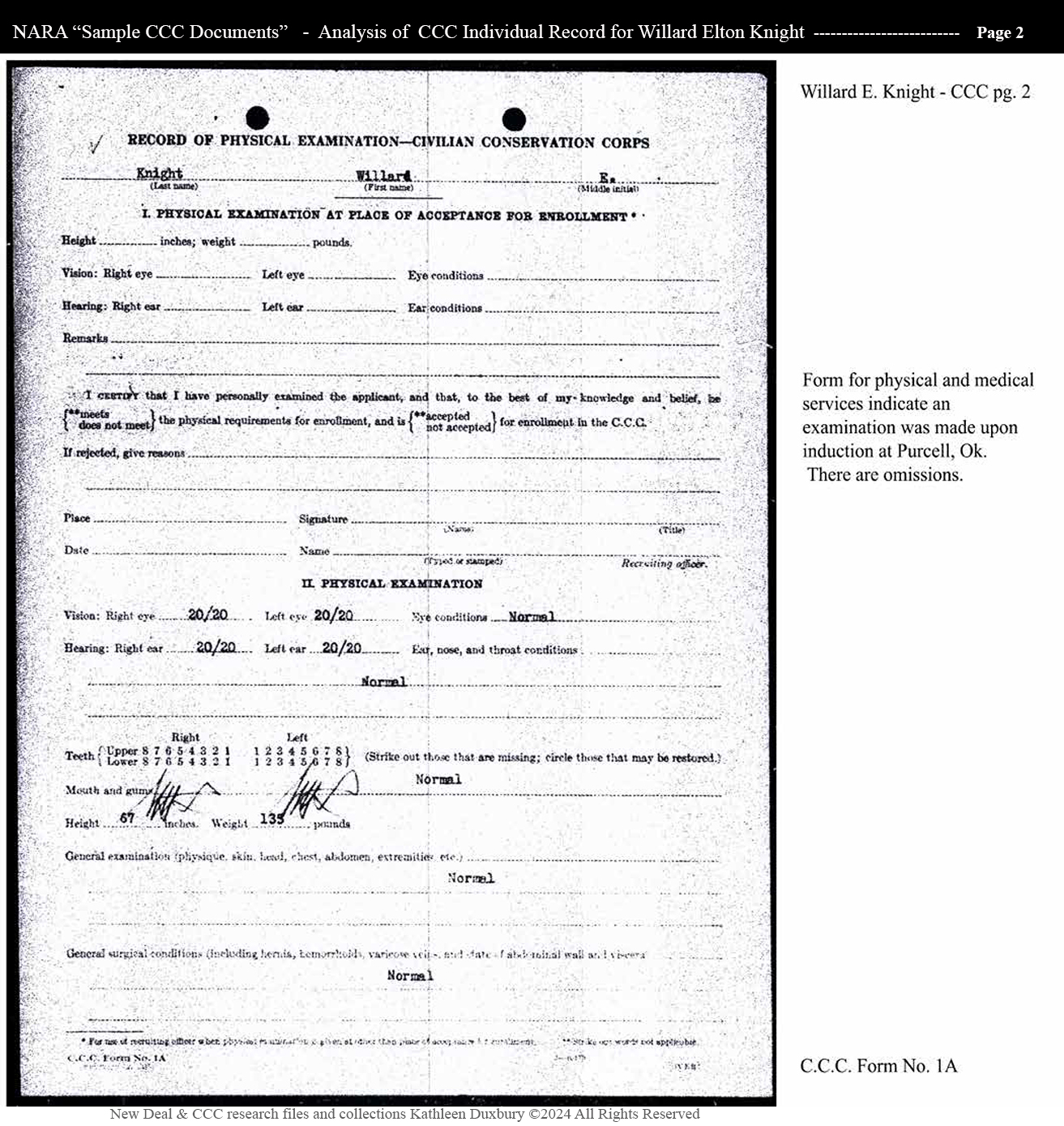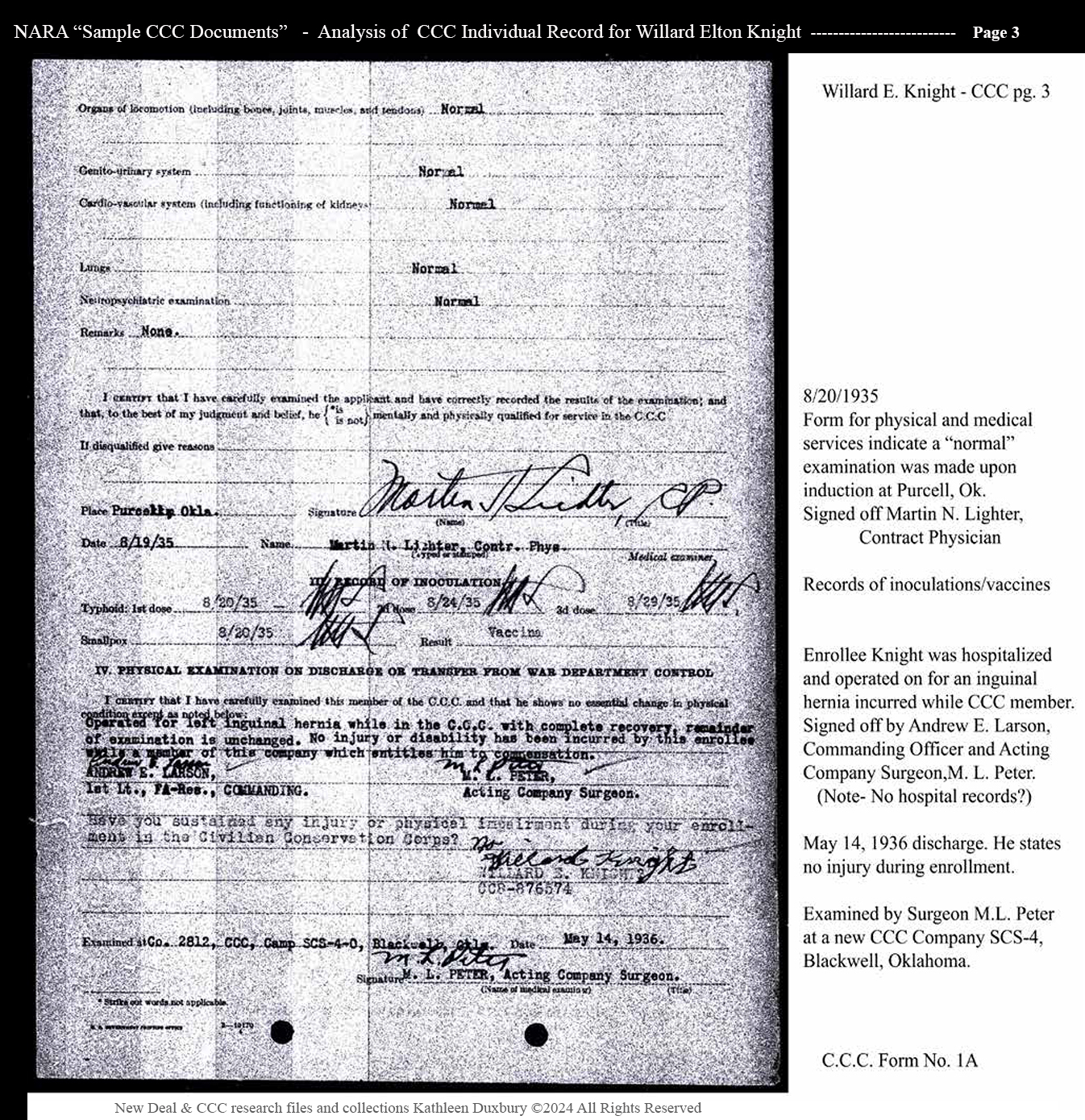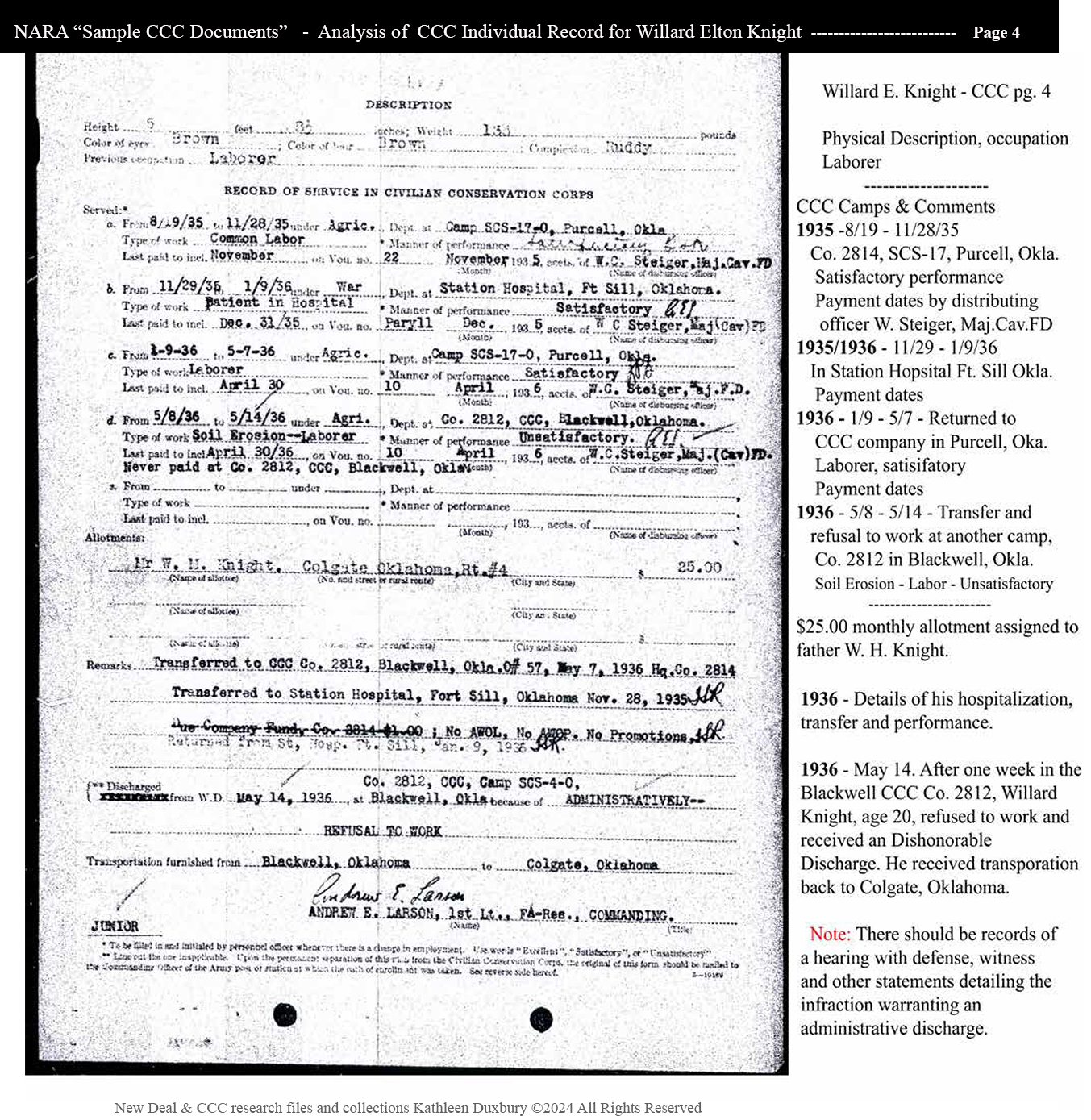Sample of a CCC Individual Enrollment Record
In May 2024, an exciting notice was posted on the National Archives and Records Administration (NARA) website announcing the digitizing and soon to be available catalog of Civilian Conservation Corps (CCC) Individual Records, A – Z., millions of them.
They are scheduled to be added, on a rolling basis, to the National Archives and Records Administration (NARA) Catalog. Completion is targeted for the end of 2024. There will be a searchable alphabetical roster of names, downloading will be free.
The NARA website has provided a downloaded PDF, “Sample CCC Documents“. The example uses enrollment files for Willard Elton Knight’s second CCC enrollment in 1935 – 1936. The sample contains a brief five pages with a wealth of information. It also provides details on a previous enrollment, in 1934, and intriguing nuggets regarding the character of his last discharge.
_____________________
CCC Individual Enrollment Record – Willard Elton Knight
* Pages 1 & 2 – C.C.C. Form No. 1, which answers the General Information and biographical questions asked of enrollees.
* Page 3 & 4 – forms with entries made by physicians, commanding officers or the local camp contract surgeon regarding findings during physical examinations, medical treatments and inoculations. Also included in Willard E. Knights CCC file are notations of successful hernia surgery, satisfactory recovery and return to the same CCC camp and work.
When Willard applied the 2nd time he was 20 years of age, use to hard farm work and road construction, but when transferred to a new CCC Co. 2812 in Blackwell, Oklahoma there was a problem. His “refusal to work” resulted in a Dishonorable Discharge.
* Page 5– Application for Enrollment, a form generated under the guidance of the Department of Labor by the Oklahoma Emergency Relief Administration specifically for young “Junior” men, single between the ages of 18 – 28 years. This Coal County Relief Administration document confirms Knight had satisfactorily served 9 months in 1934 as a regular CCC enrollee, he was Honorably Discharge. After several months, unable to find work he applied again and was approved for CCC employment.
___ NARA and other historical records demonstrate and show us just how many government agencies came together to make the CCC the success that it was, and they all had their regulation forms.
How did it all come about? We have Frances Perkins, Secretary of Labor, to thank. Read about the genesis of the Civilian Conservation Corps (CCC). We have Frances Perkins, Secretary of Labor, to thank. She was in the room where it happened. It was Secretary Perkins who went to Capitol Hill and convinced Congress of the need and national benefits of what the CCC program could offer, but they had to recruit individual enrollees first and that required applications and forms for administrtion.
“Mr. President, we haven’t got an
employment service.”
See: New Agency, New Forms – Digitizing CCC Individual Enrollment Records.
.





